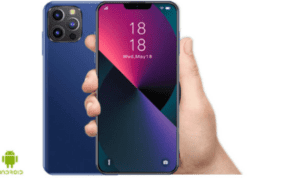Screen burn, also known as image persistence or ghost image, is a phenomenon where a faint impression of a previously displayed image remains on a screen even after the image has changed or been removed. This issue commonly occurs in older electronic display devices, such as cathode ray tube (CRT) monitors and plasma televisions, but can also affect newer display technologies like liquid crystal displays (LCDs) and organic light-emitting diode (OLED) screens. Yes, it can happen in much older devices as well as the newest phones on the market such as the Samsung Galaxy S24 or the new iPhone 15 Pro.
There are several factors that can contribute to the development of screen burn repair. One of the main causes is prolonged display of static images or logos on the screen for an extended period of time. This constant exposure to the same image can result in some pixels becoming “stuck” in a certain state, leading to the appearance of ghost images when the screen is changed to display a different image. Additionally, excessive brightness or contrast settings, as well as high temperatures, can accelerate the deterioration of pixels and contribute to screen burn. Having your screen brightness turned up to max is also the biggest cause of screenburn.
To prevent screen burn, there are several strategies that can be implemented. One effective method is to use screensavers or display power-saving features that automatically dim or turn off the screen after a period of inactivity. This helps to prevent static images from being displayed for too long and reduces the risk of screen burn. Additionally, it is recommended to avoid displaying static images or logos for extended periods of time and to regularly change the images or content displayed on the screen. This can help prevent individual pixels from becoming stuck and reduce the likelihood of screen burn occurring.
Another important preventive measure is to adjust the brightness and contrast settings of the screen to appropriate levels. Excessive brightness or contrast can accelerate the deterioration of pixels and increase the risk of screen burn. By adjusting these settings to optimal levels, the overall lifespan of the screen can be extended and the risk of screen burn minimized.
Furthermore, it is important to avoid exposing electronic display devices to high temperatures or direct sunlight for prolonged periods of time. Heat can cause pixels to degrade at a faster rate, leading to screen burn. By keeping the screen in a cool and well-ventilated environment, the risk of screen burn can be significantly reduced.
In conclusion, screen burn is a common issue that can affect electronic display devices of all types. By understanding the factors that contribute to screen burn repair service and implementing preventive measures, such as using screensavers, adjusting brightness and contrast settings, and avoiding prolonged exposure to static images, the risk of screen burn can be minimised. By taking these steps, users can ensure the longevity and optimal performance of their electronic displays.
Must Read More From Techbullion And Businesnewswire.com Thanks



































